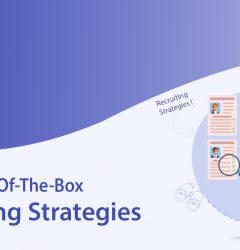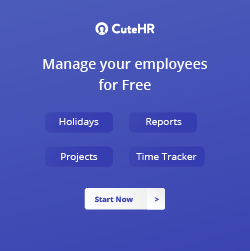02 Sep

Payroll processing may be a complex undertaking, which is why many businesses utilize payroll software and outsource payroll processing to a payroll provider. Although, we comprehend that some of you are confronting this daunting task all alone, and we appreciate anybody who has to go it alone––which is why we’ve prepared a printable payroll checklist to make things a little simpler.
We know that this payroll checklist isn’t perfect, but we can’t expect it to be; there are too many variables, such as your region, industry, and how you choose to pay employees, to construct a single checklist that covers all payroll obligations. However, if you’re starting from scratch, this will assist you in getting started.
Table of Contents
The Payroll Checklist: What’s Included?
In this payroll checklist, we discuss the significant steps involved in setting up payroll in the United States, including:
- Local tax identification numbers are used for determining and keeping track of state and local taxes.
- A federal tax identification number is the government’s way of identifying organizations for purposes of taxation.
- Providing employees with pay and tax information: what you need from them to make sure they’re employable and that you’re able to pay them correctly
- A state or local withholding account is a bank account used to hold deducted taxes until they can be distributed on the due date.
Next, it explains how the payroll checklist is processed, which is accomplished through the following steps:
- Taking into account gross pay: calculating the amount earned before taxes and deductions.
- Calculating net pay: calculating the final payment received by the employee.
- Time calculation from hourly timesheets and time cards.
- Calculating withholdings: withholding amounts for federal and state taxes and benefits.
- Withholdings must be distributed: taxes and other withholdings must be paid to the proper accounts and service providers.
- Paying workers: cutting checks and making direct deposits.
This payroll checklist does not include everything you need to do
Maintaining accurate and complete records is the most important rule in payroll processing. Due to this, the burden of proof sits with the employer in the case of an alleged discrepancy due to inaccurate pay for an employee or incorrect taxes received by a government agency or state. These elements aren’t included in the payroll checklist, but it’s nonetheless essential that employers remain compliant by:
- Organizing and maintaining detailed, complete, and accurate records.
- Ensuring timely payment of state and federal taxes.
- Reporting changes to the IRS in regards to hiring and employment.
What are the best places to store employee payroll checklist information?
You can store payroll documentation in a few different ways. It depends upon your preferences whether you opt to:
- Keep paper duplicates (e.g., file organizer).
- Make use of electronic storage solutions (e.g., store on a computer).
On the off chance that you choose to put in any amount of work course, make a point to keep records in a solid area, like a locked file organizer. Keep records coordinated by utilizing organizers and documents. Furthermore, have reinforcement records in the event something happens to the first documents.
Employee payroll paperwork can be stored electronically on your computer, smartphone, or tablet or by utilizing payroll or HR software. If you save the information digitally, keep backup copies in case your device or program fails. Additionally, keep your employee papers using secure software or a digital filing system.
Allow only authorized personnel (e.g., managers) access to employee payroll records, regardless of whatever method you use.
How long to keep a payroll checklist record?
Payroll records must be kept for at least three years, according to the FLSA (e.g., wages paid, benefits, etc.). Also, save salary computation records (such as time cards, work schedules, and so on) for at least two years.
Keep employment tax paperwork (such as Forms W-4) for at least four years. If you choose, you can store payroll records for a longer period. However, you must keep them for as long as the FLSA requires.
Remember that your state may likewise have laws of finance recordkeeping. Contingent upon your state, you might have to store worker records for longer than the FLSA’s prerequisites. Look at your state to find how long you want to hold a worker finance record.
Should I try to do my payroll checklist?
That’s a difficult question to answer. On the one hand, a payroll service does cost money, and any money saved may be reinvested in your company or utilized for other critical activities.
Another way to look at it is to consider accurate, timely pay for what it is: maybe the most significant benefit that you, as an employer, deliver to your employees. In reality, most Americans live paycheck to paycheck, which means that missing a payment for something crucial, such as a mortgage or rent, would only take a single lost paycheck.
Paying for payroll software and payroll processing is expensive, but it also ensures that you are offering the greatest benefit to your employees properly and on time.
It’s also a way to reduce your own risk because the payroll provider, who should be insured, is often in charge of withholding and paying taxes, overtime, and benefits premiums.
If you’ve never considered paying for payroll software or processing, consider addressing all of your payroll problems at once by adopting HR software with integrated payroll as a cost-effective solution.
Payroll Checklist Processing
To guarantee that you are processing payroll correctly, use this step-by-step checklist.
Before you begin, always make sure you retain proper records in case of a discrepancy.
If there is a disagreement with employees or government authorities, employers have the burden of evidence.
STEP 1: Before Processing
You will need the following items before executing the payroll checklist for the first time:
- Tax identification numbers issued by states and municipalities.
- An Employer Identification Number (EIN).
- Wage and pay information for employees.
- Tax information for employees.
- W-4 form for full-time and part-time employees.
- W-9 form for contract and freelance workers.
- Form I-9, which verifies eligibility for work in the United States.
- Direct deposit information for employees (if you pay via direct deposit).
- An account for the payroll budget.
- A pay period schedule.
- Paper checks and/or direct deposit.
- Your tax payment plan.
- Withholding accounts at the federal and state levels
- Withholding accounts at the federal and state levels
- Electronic Federal Tax Payment System account (EFTPS).
- State unemployment insurance account (SUTA), as described on the Labor Department’s website in your state.
- Declare the new hire reporting account.
- Account for state worker’s compensation insurance.
- An account for the payroll budget.
- A payroll schedule.
- Paper checks and/or direct deposit.
- Your tax payment plan.
STEP 2: Review Employee Details
Before conducting payroll, look over your personnel information to make sure nothing has been missed or modified.
- New employee information.
- Full name and address.
- According to the legislation, they are either an employee or an independent contractor.
- Employees should use their Social Security number or EIN from IRS Form W-4, while contractors should use Form W-9.
- Form W-4 details on employee tax withholding (withholding is not generally necessary for independent contractors).
- Salary and additional revenues, such as sales commissions or tips.
- Whether or if their wages are liable to garnishment.
- Which employee perks have they selected that need withholding?
- Direct deposit bank account details (if your issue pays this way).
- Form I-9, which verifies eligibility for work in the United States.
- Personal information about current workers.
- Address changes.
- Changes in tax withholding.
- Benefits modifications.
- Changes in employment status.
- Changes in the job title.
- Changes in wages/salaries.
STEP 3: Compute Gross Pay
Determine the right amount of money that each employee will get before withholding.
- Hourly workers.
- Obtain signed timesheets or signed timecards from management.
- Examine the hours that have been recorded for each employee.
- Calculate the elapsed time (varies by state).
- Determine any paid time off.
- Determine any additional pay.
- Payment is made retroactively.
- Commissions
- Bonuses
- Employees that are paid
- Determine your gross pay.
- Keep track of any paid time off.
- Determine any additional pay.
- Payment is made retroactively.
- Commissions
- Bonuses
STEP 4: Compute Net Pay
Calculate the amount of money you need to deduct from each employee’s compensation, making that pre-tax contribution are deducted before taxes are calculated. Don’t forget to include any company-matched contributions to healthcare or retirement accounts in your calculations.
- Adjustments that are pre-tax or tax-free.
- Premiums for benefits (pre-tax).
- Contributions to an HSA (pre-tax).
- Contributions to retirement funds (pre-tax for 401(k)s and non-Roth IRAs).
- Expense reimbursements (not taxed).
- Withholdings and taxes.
- Taxation at the federal level.
- The Medicare tax.
- Withholdings from Social Security.
- Income taxation in the state.
- Local taxes.
- Wage surcharges.
- Check for correctness by double-checking locations and quantities.
STEP 5: Complete Review
Before you cut paper checks or input amounts for direct deposit, make the last pass to search for anomalies and confirm that your records are up to date.
STEP 6: Payment
- Examine each employee’s payment instructions.
- Paper checks should be printed and signed.
- Enter and confirm direct deposit amounts.
STEP 7: Deliver Withholdings
Employees’ salaries must be withheld and placed into the appropriate accounts for future payment of state, municipal, and federal taxes or directly to retirement funds and benefits providers. Contributions that have been matched by the corporation should be included with these payouts.
Frequently Asked Questions (FAQs)
What is the process for writing payroll procedures?
The process of writing payroll procedures is:-
- Describe how employees record and submit time.
- As you write, go through the actions.
- Describe how to compute employee salaries.
- Talk about how to make payment modifications.
- Make a payment schedule.
- Describe how to print checks and send payroll data to the payroll servicer.
What exactly are payroll controls?
The payroll process, which begins with getting employee data, payroll input, time entry, payroll processing, and payroll accounting, is a complex one. It is important to identify a user’s role and his or her tasks.
Payroll Checklist: The Bottom Line
The details of your first paycheck will be determined by a variety of circumstances, including your industry and payroll size. Once you’ve determined your particular payroll duties, you may adapt your payroll management checklist to meet those tasks. If you opt to use an outsourced payroll partner, make sure to work closely with them throughout your first payroll and as required after that.












Himani